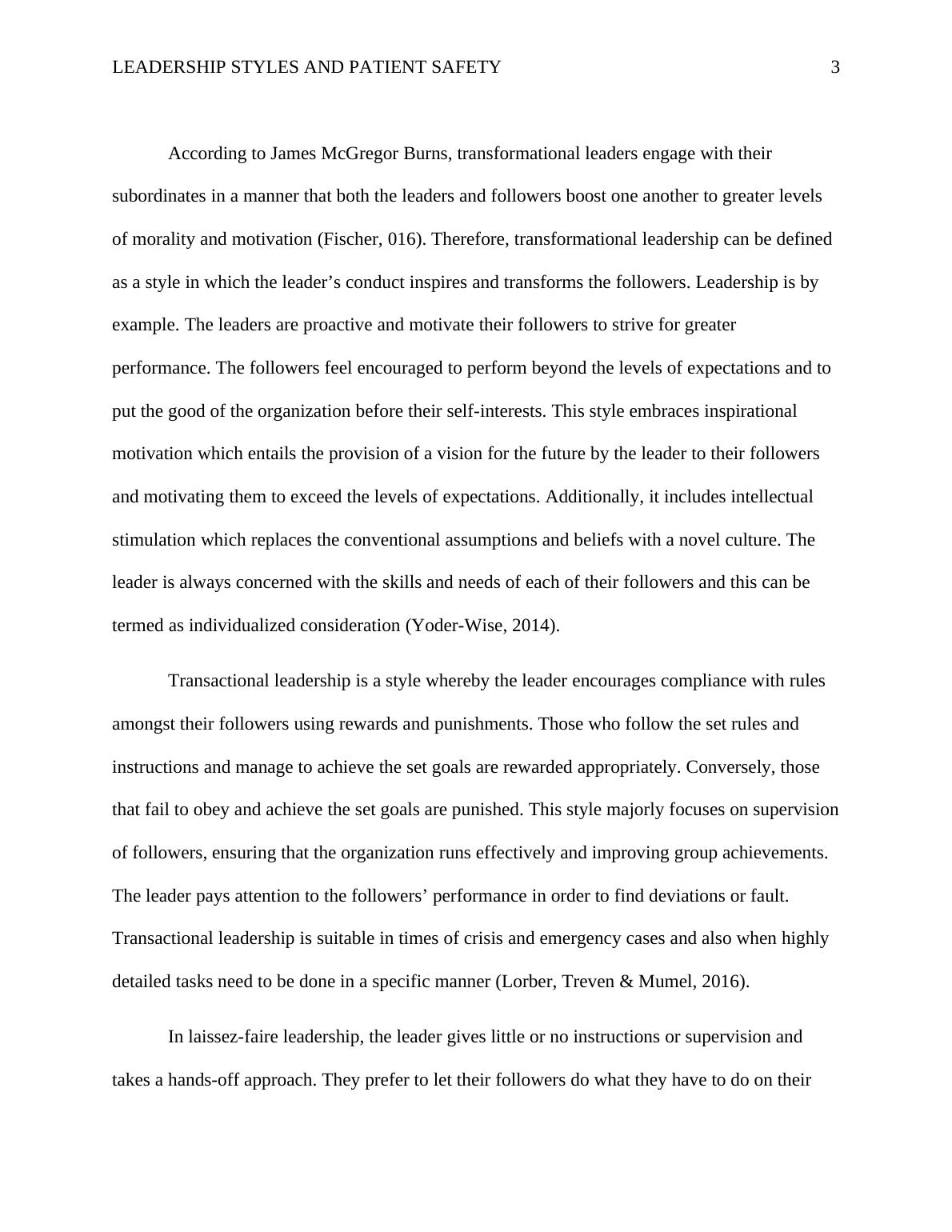401022 Leadership in Nursing & Midwifery | WSU
7 Pages1774 Words161 Views
Western Sydney University
Leadership in Nursing & Midwifery (401022)
Added on 2020-03-01
About This Document
In this document, we will discuss Leadership Styles and Patient Safety. Also, we cover how nurses play a major role in the health setting and how they are managed by their leaders affects their performance management and patient outcomes. This essay will focus on transformational leadership, transactional, and laissez-fairetypes of leadership and the various ways they affect patient safety in healthcare.
401022 Leadership in Nursing & Midwifery | WSU
Western Sydney University
Leadership in Nursing & Midwifery (401022)
Added on 2020-03-01
ShareRelated Documents
End of preview
Want to access all the pages? Upload your documents or become a member.
Nursing Leadership Patient Safety
|8
|1698
|62
Nursing Leadership: Improving Patient Safety and Outcomes
|8
|2185
|195
Leadership 5 Nursing Name University Patient Safety in Healthcare Setting
|6
|1480
|417
Leadership Styles And Patient Safety
|8
|2085
|17
Patient Safety And Effective Leadership
|8
|1868
|536
Relationship between Leadership Styles and Patient Safety
|6
|1662
|209



